Hole in the Clouds
Sep 22, 2009
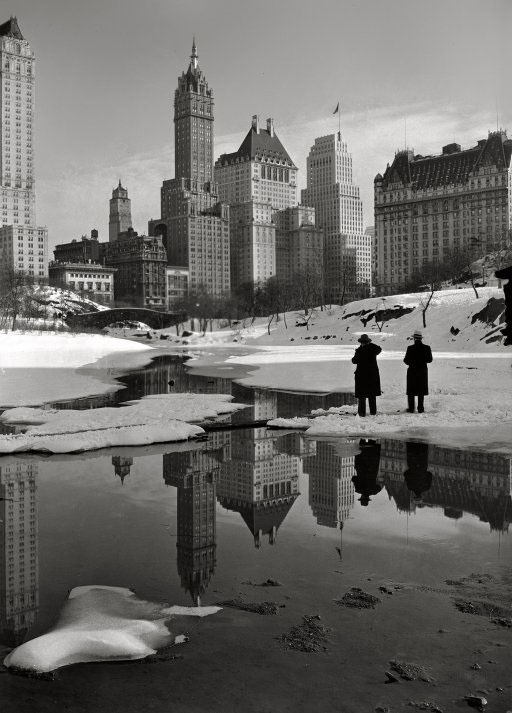
I'm not a New York person, but this view of the Savoy Plaza and other Midtown towers has got to be one of the most gorgeous cityscapes anywhere, ever. It was shot in Central Park in 1933 by architectural photographer Samuel Gottscho. Today, the view from the same spot would be dominated by tall glass office boxes; the Savoy and many of the other old towers have been demolished.
Gottscho worked as a traveling lace and fabric salesman for 23 years before he could work with his camera full time. He specialized in pictures of houses and gardens, but also branched out into nature photography.
A new novel by E.L. Doctorow uses a heavily photoshopped version of this picture on the cover.
New York
landscape
Manhattan
cityscape
Savoy Plaza
Central Park
(Image credit: Samuel H. Gottscho)
Aug 16, 2009
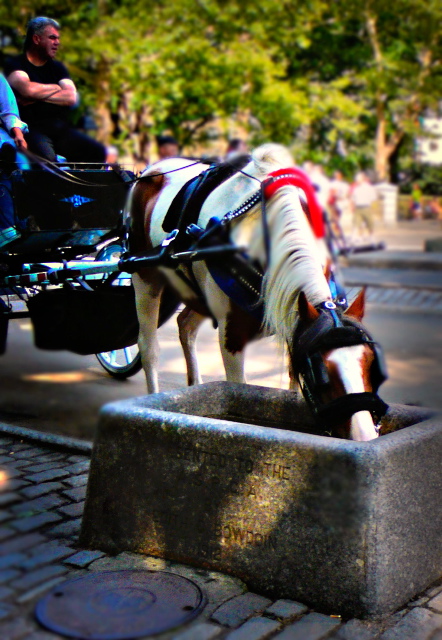
Even in the leafy dapple of New York's Central Park, these are dog days for horses.. The inscription on the trough reads: "Presented to the S.P.C.A. by Edith D. Bowdoin, 1912."
New York
animal
Central Park
Edith D. Bowdoin
horse
(Image credit: Ellen Stein)
Sep 26, 2012
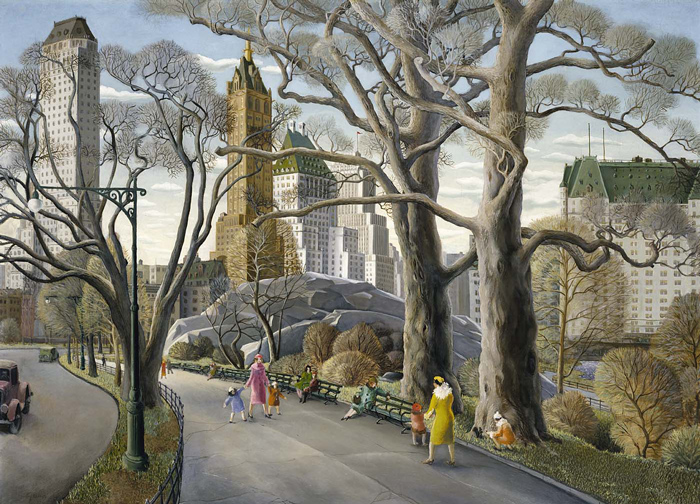 In 1934, Carl Gustaf Nelson painted life in New York's Central Park, above, the way life ought to be; in 1932 and 1933, photographers from the New York Daily News aimed their cameras at Central Park's Hooverville, below, revealing life that was not being lived the way people ought to live. Both images tell something of the story, in an upstairs-downstairs sort of way.
In 1934, Carl Gustaf Nelson painted life in New York's Central Park, above, the way life ought to be; in 1932 and 1933, photographers from the New York Daily News aimed their cameras at Central Park's Hooverville, below, revealing life that was not being lived the way people ought to live. Both images tell something of the story, in an upstairs-downstairs sort of way.
New York's homeless citizens began building shanties in Central Park's Sheep Meadow late in 1931, by which time half the factories in the city had been shut down by the Depression and literally millions of New Yorkers were desperate for food and shelter. In 1930 and 1931 homeless people tried to camp in Central Park, but they were repeatedly arrested for vagrancy; as the economic situation became more and more dire, however, policemen and judges became more sympathetic to the "bums," and official eyes were averted as this and many other Hoovervilles emerged. Some of the shacks were said to be solid brick and stone houses with tile roofs, built by unemployed bricklayers.
The residents of Central Park's Hooverville said they had built their homes along Depression Street. Many of the shanties had furniture and at least one had carpets, but there was no electricity or running water, no sanitary facilities at all. In 1933, the city condemned the dwellings, evicted the residents, and demolished the shantytown. The official justification was public health.
Thus, by 1934, when Nelson painted his picture, Central Park had been officially reclaimed for the sole use of well-dressed, well-to-do people like the ones in the painting, people with warm apartments to go home to and indoor plumbing. The people of Hooverville had moved on, and they would keep on moving on, scraping by, somehow, till a government stimulus program, aka World War II, finally brought full employment back to America.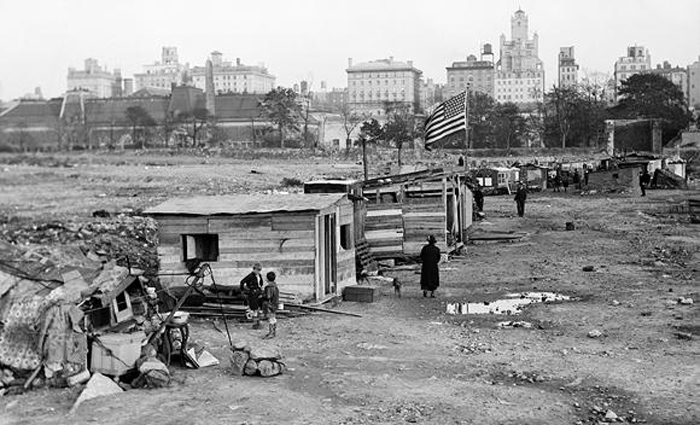
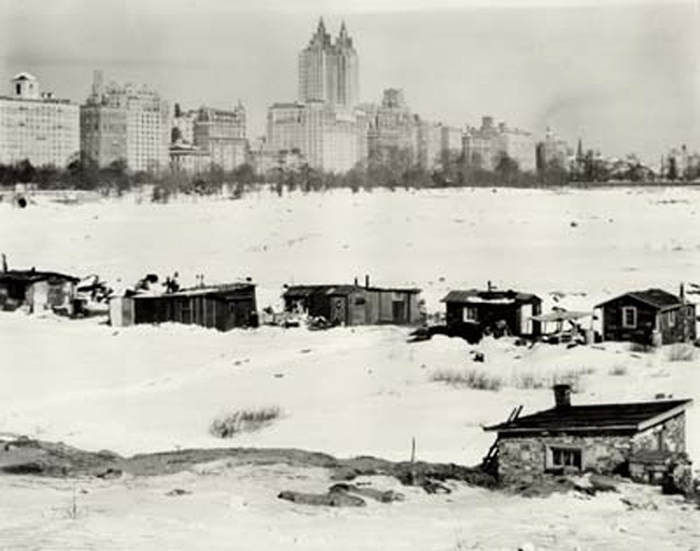
landscape
cityscape
Central Park
children
New York City
skyscrapers
Depression
park
Hooverville
shacks
(Painting by Carl Gustaf Nelson; Photos by New York Daily News)


 In 1934, Carl Gustaf Nelson painted life in New York's Central Park, above, the way life ought to be; in 1932 and 1933, photographers from the New York Daily News aimed their cameras at Central Park's Hooverville, below, revealing life that was not being lived the way people ought to live. Both images tell something of the story, in an upstairs-downstairs sort of way.
In 1934, Carl Gustaf Nelson painted life in New York's Central Park, above, the way life ought to be; in 1932 and 1933, photographers from the New York Daily News aimed their cameras at Central Park's Hooverville, below, revealing life that was not being lived the way people ought to live. Both images tell something of the story, in an upstairs-downstairs sort of way.
